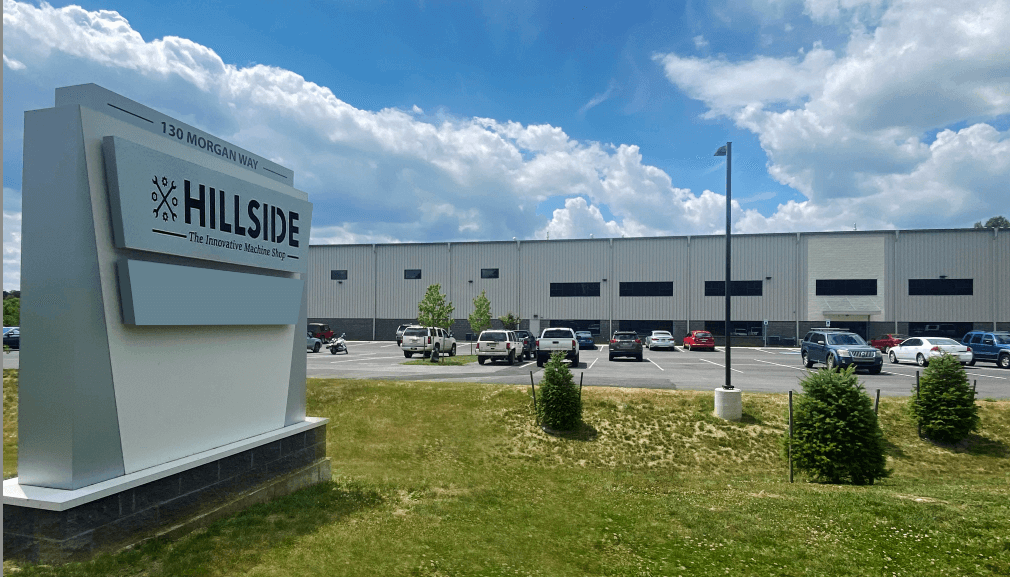
Honoring Manufacturing’s Past While Looking to the Future
It’s no secret that competitive manufacturing companies modernize their shops and embrace Industry 4.0 technologies. At Hillside Custom, we’ve discovered that leaning into a “new school” of manufacturing doesn’t have to mean abandoning everything from the “old school.”
In 2022, we’re celebrating our 30th year in business as a full-service prototype to production shop. One of the secrets to our longevity is welcoming change and innovative solutions while staying true to our roots of manual manufacturing.
4 Reasons to Balance “New School” and “Old School” Manufacturing
Our balanced approach has benefited our company in many ways. Here are a few takeaways I’m happy to share:
1. Progressing gradually mitigates resistance to change
The manufacturing industry is notorious for resisting change, and not without good reason.
For starters, change is expensive. New equipment is anything but cheap, and leaders worry that they won’t get the return they need on a six-figure investment.
Adopting and implementing new technologies also takes time away from profitable manufacturing work. Employees must be trained on new machines and capabilities on the shop owner’s dime—team education isn’t a billable expense.
Finally, some team members’ mindsets can be difficult to overcome. Folks might feel “set” in their knowledge base and resist learning new capabilities.
By modernizing our shop gradually, we’ve been able to make purchases wisely and ease our employees into each new era of change. We haven’t pushed ourselves to become a new shop overnight, and as a result, our journey to embracing innovation has felt organic rather than forced.
2. Using equipment from all eras improves our offerings
When we started in 1992, Hillside Custom consisted of four people, a mill, and a lathe in a garage in Honey Brook, Pennsylvania. Today we have a 100,000-square-foot full-service, multi-divisional facility with 90+ employees providing precision machining and fabrication services.
But we didn’t just toss out all our old equipment as we grew. On one side of our shop floor, you’ll still find manual mills and lathes that we often use for prototypes, one-off jobs, or specialty projects. The other side of our facility is home to our more advanced equipment—cutting-edge machines that cost hundreds of thousands of dollars.
Rather than opting for either the old school or the new school of equipment, we can offer our customers a broader range of services by embracing both.
Sometimes, as shops modernize, they get so focused on the profitability of high-volume production that they lose their connection to manual manufacturing and their ability to be flexible and take on fun or unique jobs.
Our range of machines and services has set us apart from our competitors: customers know they can bring us anything. We have the equipment and the knowledge to tackle projects many other shops have to turn away.

3. Fostering a culture of intergenerational education strengthens skillsets
In the 1960s, our founder learned manual machining skills at a local trade school. Now we’re hosting open houses and hiring interns from that same school—only they’re coming into the shop to learn about the most innovative manufacturing techniques.
Instead of taking a rigid stance and proclaiming one generation’s style, knowledge, and skills better than the other, we leverage the wealth of knowledge among employees to share information and help each other grow and learn.
The 19-year-olds we host in our shop today have an innate technical knowledge and fresh perspective that older machinists find inspiring. And our more senior team members have invaluable lived experience and skills from working with materials and machines for decades.
4. Committing to customer needs builds business partnerships
We’re proud to say that some of our biggest customers today are the same ones that took a chance on Hillside Custom in the 1990s. Our longtime partnerships have helped our business grow, and we’ve been fortunate enough to foster deep personal and professional bonds.
In many cases, our business has evolved alongside our customers’ businesses. Over the years, we’ve stepped up to deliver when they needed new or different services. In fact, today, we have five full-time employees who work directly at the facility of our first and biggest customer.
A Bright Future Awaits Our Shop
Thirty years after starting our business in a garage, the future for Hillside Custom has never looked brighter.
This year, we’re adding 50,000+ square feet to our facility and plan to fill it with cutting-edge equipment. We’re expanding our capabilities to include additive manufacturing, and we recently purchased a new laser to level up our laser cutting services.
We’re going to keep looking toward the horizon of innovation while staying true to who we are. We’ll continue to embrace technology that fills our knowledge gaps and increases efficiency, but we won’t jump at the latest advancements and shiny new objects. By being thoughtful about the optimal solutions—whether from the new or old school of manufacturing—we’ll continue to serve our customers and thrive.
I encourage all manufacturing shop owners to embrace change while honoring the past and the paths taken to arrive at the present. The traditional ways of doing business aren’t wrong, but they aren’t the only option. It’s safe to experiment with new technologies—your business will be better for it.
—
Download our latest Custom Part Buyer Report to find out how to meet and exceed customer expectations and win more work.
Cassidy Fink is the Sales and Customer Relations Manager at Hillside Custom, a precision manufacturing shop in Morgantown, Pennsylvania.


